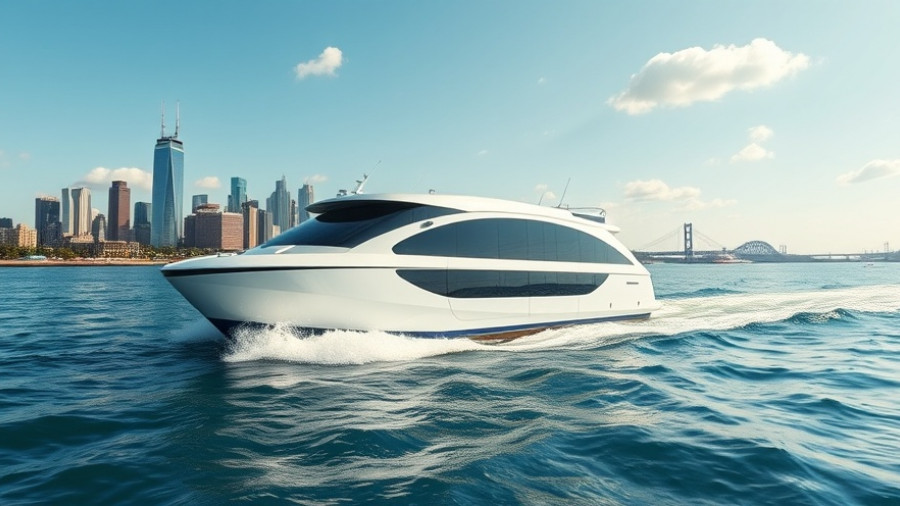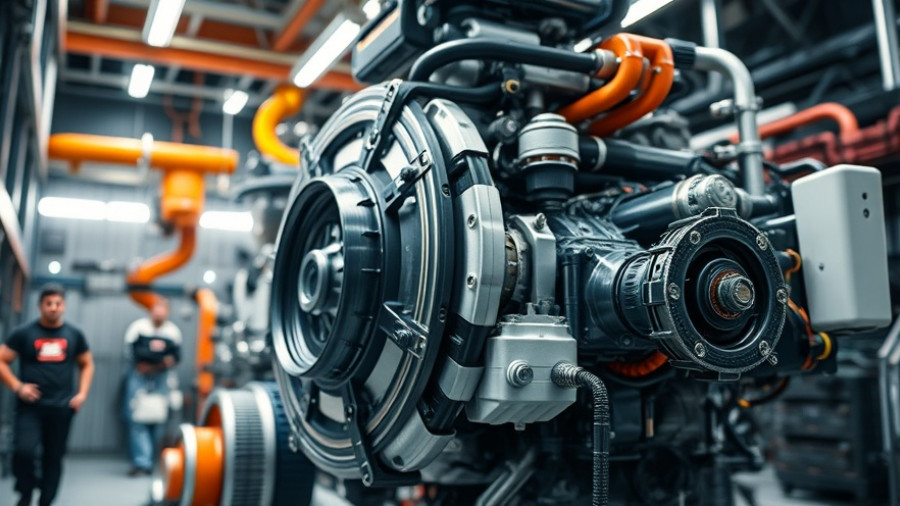
The Dawn of Hydrogen-Powered Shipping: A New Partnership
A groundbreaking partnership has emerged between Belgium and Japan, aimed at revolutionizing the shipping industry through hydrogen engine technology. This collaboration is set to launch BeHydro's cutting-edge dual fuel and 100% hydrogen engines in Japan's ports and coastal areas. Not only will these engines adapt to Japanese standards, but they also come with a comprehensive suite of local testing, commissioning, and after-sales support, marking a significant step toward greener maritime practices.
Key Figures Attend the Ceremony
The partnership agreement was ceremoniously signed on June 6 at the Belgian embassy in Tokyo, with notable figures in attendance, including Belgium's Princess Astrid and Ambassador Antoine Evrard, alongside Japan's Ambassador Masahiro Mikami. This high-profile gathering underscored the importance of the initiative, not only for Belgium and Japan but also for the global shipping community aimed at reducing carbon emissions.
Innovative Engineering Takes Center Stage
Under this partnership, two V12 BeHydro dual fuel hydrogen engines will be installed on a tugboat being constructed at Tsuneishi Shipbuilding, scheduled for delivery in July. Simultaneously, three inline 6-cylinder BeHydro 100% hydrogen engines will be developed for a zero-emission ship under the auspices of JPNH2YDRO, a joint venture focused on advancing hydrogen as a marine fuel. This ambitious approach not only demonstrates technological innovation but also reflects the growing urgency for sustainable shipping solutions.
Pioneering Zero Emission Solutions
The collaboration represents a crucial step in realizing the Nippon Foundation Zero Emission Ships Project. As green technologies advance, industry leaders like Mitsuo Kambara from JPNH2YDRO emphasize their ongoing commitments to implementing hydrogen internal combustion engine (H2ICE) technology into maritime operations. “With this collaboration, the already commercialized medium-speed engines are finally becoming a reality in Japan,” he stated, highlighting ongoing developments that include the world’s first dual fuel hydrogen passenger ferry and a marine hydrogen refueling station.
Continuing the Legacy of Innovation
Tim Berkmoes, CEO of BeHydro's parent company, ABC Engines, echoed the sentiment of responsibility in driving innovation, stating that “ABC has been at the forefront of researching alternative fuels and improving exhaust systems for over a century.” This commitment to reducing emissions through their BeHydro solutions showcases the potential for net-zero emissions in marine operations, which is critical for meeting global sustainability goals.
The Road Ahead: Opportunities in Hydrogen Shipping
As the world increasingly turns its attention to reducing carbon footprints, the partnership between Belgium and Japan offers a ray of hope and innovation. This endeavor not only prioritizes environmental responsibility but also sets a global precedent for collaborative efforts in hydrogen technology. As other nations observe this partnership, there's a palpable opportunity for the spread of similar initiatives aimed at transforming the shipping industry on an international scale.
Conclusion: Embracing a Sustainable Future
The partnership between Belgium and Japan marks an important stride toward the future of maritime transportation. It highlights how collaborative efforts can yield innovative solutions to some of the industry's biggest challenges. As we look ahead to the waves of change this partnership will bring, it's crucial for other territories involved in shipping to consider similar approaches for their transition toward sustainable practices. The world is watching as hydrogen-powered solutions set sail on a new era for the shipping industry.
 Add Row
Add Row  Add
Add 




Write A Comment